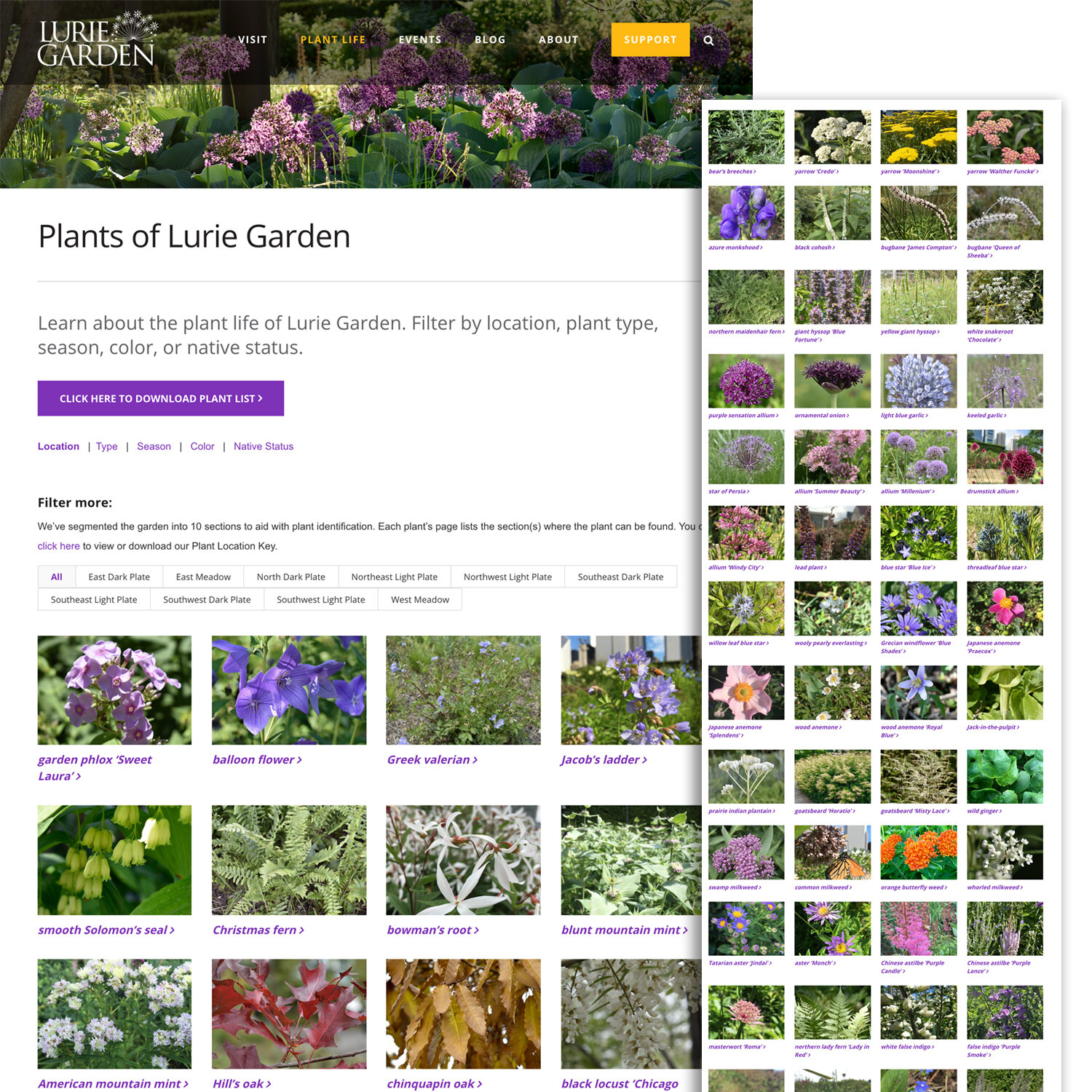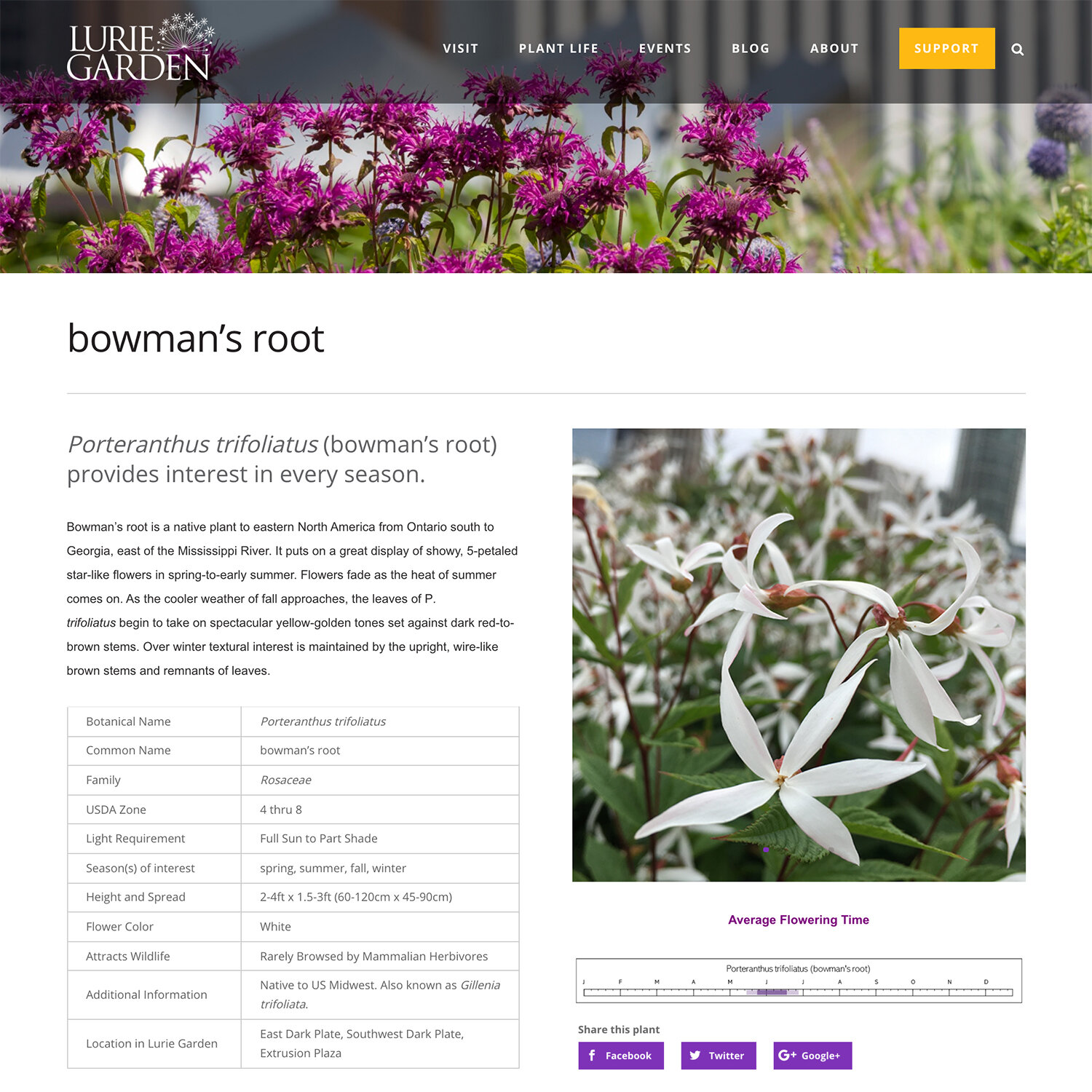iNaturalist application, Question 3:
Your ability to tell stories in a succinct and visual way is essential. Please share a link to an example of your work that illustrates those skills, and describe how you created and approached the work.
Example 1: Social Media Post
POST COPY:
If you walk through the garden now you might skip over a blah, yellowed, sad, patch of Scottish Lovage, but we wouldn't advise it. If you do, you'll be missing a chance to see quite a few black swallowtail caterpillars!⠀
We give their camouflage-game a solid 7, so you may find one or two right away but you'll need to look a little more to find others. If you're sneaky you might see them move around and eating leaves. But if they get even the smallest hint that something is amiss they'll freeze in their tracks and won't move for a long time. While you're there, check out their cute little feet!!*⠀
For guardians of boys ages 3+, who love all things 'poop', this will be the best stop all summer. See, these caterpillars are prolific eaters and boy, do they poop!** A LOT. You'll find lots of poops in the form of little black pellets caught on the leaves.⠀
Scottish Lovage is in the family of 'host plants' for the black swallowtail butterfly. A host plant is a plant that an insect needs as a part of its life cycle. In this case the black swallowtail butterfly will lay eggs only on plants in the Carrot/Parsley family.⠀
*Technically called "abdominal prolegs", **nerd word for this 'poop' is 'frass.'
Scottish Lovage = Ligusticum scoticum, black swallowtail = Papilio polyxenes
PROCESS:
(178 words)
As the Marketing Communications Manager at Lurie Garden, I was responsible for creating content across all audience touchpoints, including social media. This is one of my favorite social media posts I made during my time there. The objective of this post was to draw attention to concepts of host plants, camouflage, and the utility of plants “past their prime.” I wanted to make it fun, playful, and educational for a range of interests and levels.
I took many photos of the caterpillars and yellowed patch of lovage in context. I chose the best photo as the lead image in hopes to halt scrolling and evoke curiosity. After the initial image, I ordered the photos as they are mentioned in the caption. I added fun graphic elements to the “poop” image that matched the energy of the (inner and outer) little kid who might have fun finding poop.
In these contexts, I try to weave narrative with primary content with the hope that those who read will be entertained, educated, or both! We got fantastic engagement on this post.
(You can see the original post here.)
Example 2: Lurie Garden Plant Identification
PROCESS:
At Lurie Garden, providing plant identification for the public was one of the most in-demand and challenging problems.
It was difficult for the public to make proper identifications with traditional signage. Based on years of talking to visitors we had a deep understanding of how different people see, identify, and relate to plants. We focused on image, color, name, season, nativity, plant type, shape, and ecological benefit.
I created simplified keys and a design for each touchpoint where people would interact with our plant identification system - our website, card collection, and signage. The website and card collection were customizable allowing users to sort plants based on their preferences and ways of learning.
Example 3: Blog Post (longer)
(click here to read post)
In this post, my aim was to provide an overview of the annual process of mowing the garden and share details of an experiment we undertook. This was one of my favorite kinds of content because it was an opportunity to position ourselves as fellow learners.
PROCESS:
My content creation process typically follows these steps:
Story Identification: I’m rarely at a loss for content ideas. I love talking to people about their work. I’m curious about processes and interconnections and I have a knack for finding communication and content gaps.
Drafting: After creating a very rough outline, I immediately write a "crappy first draft." This crucial step helps me quickly identify flaws in my thinking, discover the true structure of the piece, and determine what supporting materials I'll need. This initial draft also helps me uncover opportunities for collaboration.
Development and Refinement: As I develop the draft, I focus on ensuring the audience has the essential information they need and that any addition is in the service of enrichment or delight.
Review: Depending on the complexity and sensitivity of the project, I seek feedback from colleagues and allow myself time to step away and return with a fresh perspective.
Proofreading/Editing: Before publishing, I always have another person review the piece, and I utilize tools like Grammarly to catch any grammatical or spelling errors.









